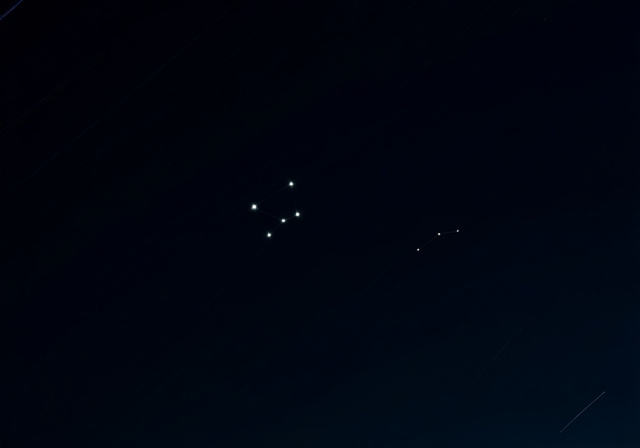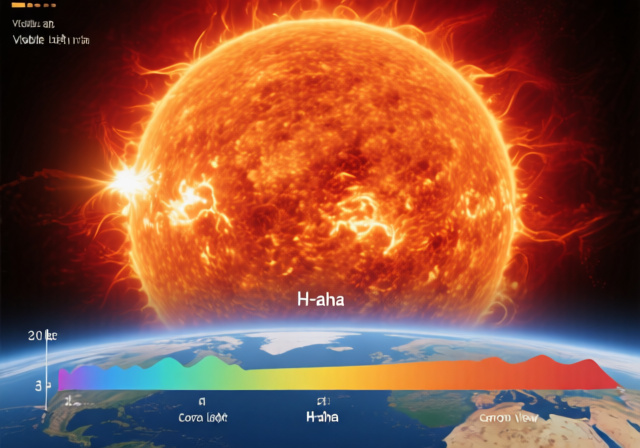



Have you ever looked up at the night sky and wondered about those ancient patterns of stars that have captivated humanity for millennia? Constellations are more than just pretty patterns – they’re our celestial roadmap, cultural heritage, and the foundation of astronomical understanding.
Constellations are officially recognized areas of the sky with defined boundaries containing stars that form recognizable patterns, serving as memory aids that help us navigate and understand the celestial sphere. These 88 officially recognized patterns connect us to ancient civilizations while providing modern astronomers with a systematic way to map and study the universe.
Having spent countless nights photographing the night sky, I’ve discovered that understanding constellations transforms random stars into familiar friends. Whether you’re using the best equipment for constellation viewing or simply your naked eyes, these patterns offer a gateway to astronomical discovery and stunning photography opportunities.
This comprehensive guide will take you through 20 fascinating constellation facts, from their ancient origins to modern applications, plus practical tips for viewing and photographing these celestial wonders.
The story of constellations begins with our earliest ancestors gazing at the night sky and finding meaning in the stars. Archaeological evidence suggests that prehistoric cultures identified star patterns as far back as the Paleolithic era, with the Lascaux cave paintings possibly representing constellations dating to 17,000 BCE.
The Sumerians and Babylonians (3000-500 BCE) developed some of the earliest recorded constellation systems, particularly the zodiac constellations. Their astronomical records show sophisticated understanding of celestial movements and seasonal star patterns. The Babylonians divided the ecliptic into 12 equal sections, each associated with specific star groupings that became our modern zodiac.
Ancient Egyptian astronomy (3000-300 BCE) used constellations for both religious and agricultural purposes. Their decans system divided the night into 36 groups of stars, each rising for 10 days throughout the year. These constellations helped predict the Nile’s flooding and marked important religious festivals.
Greek astronomy (600 BCE-200 CE) synthesized earlier knowledge and created many constellations we still recognize today. The 2nd-century astronomer Ptolemy documented 48 constellations in his Almagest, establishing the foundation for Western constellation tradition. These classical constellations primarily feature figures from Greek mythology, reflecting the cultural storytelling tradition of connecting astronomical objects to their pantheon of gods and heroes.
The Islamic Golden Age (8th-14th centuries CE) preserved and expanded Greek astronomical knowledge. Arab astronomers translated Ptolemy’s works and added their own observations, naming many bright stars with Arabic names that persist today (Betelgeuse, Algol, Altair). They created new constellations and refined star positions, laying groundwork for later European astronomy.
European Age of Exploration (15th-18th centuries) revealed southern hemisphere constellations previously unknown to Western astronomy. Navigators like Amerigo Vespucci and Ferdinand Magellan documented new star patterns, leading to the creation of constellations commemorating scientific instruments and exotic animals of the southern skies.
The modern era brought scientific standardization. In 1922, the International Astronomical Union (IAU) officially defined 88 constellations with precise boundaries, ending centuries of regional variations. This system provides astronomers worldwide with a consistent framework for celestial mapping and research, ensuring every point in the sky belongs to exactly one constellation.
Greek mythology, Orion the Hunter faces Taurus the Bull in an eternal celestial chase, while Scorpius pursues him across the sky – explaining why these constellations never appear simultaneously. The Perseus constellation depicts the hero who saved Andromeda from the sea monster Cetus, with all three characters immortalized in neighboring star groups.
Roman mythology adopted Greek patterns but added their own interpretations. They saw Castor and Pollux (Gemini) as protector gods of sailors, and used their appearance before storms as omen. The Roman agricultural calendar relied heavily on constellation appearances for determining optimal planting and harvesting times.
Chinese astronomy developed independently, creating completely different constellation patterns. Instead of mythical figures, Chinese constellations often represent palaces, temples, and administrative centers reflecting their imperial court structure. The Big Dipper became the Northern Dipper (Bei Dou), part of the Purple Palace enclosure representing the emperor’s celestial residence.
Native American cultures created diverse constellation interpretations reflecting their environments and beliefs. The Lakota saw the Big Dipper as a buffalo, the Pleiades as young girls dancing, and the Milky Way as the path spirits travel to the afterlife. These constellation stories often contain moral lessons and practical knowledge about seasonal changes.
Australian Aboriginal astronomy includes some of the oldest continuous astronomical traditions. The Emu in the Sky constellation isn’t formed by stars but by dark nebulae against the Milky Way’s bright background. Its position in the sky indicates emu egg-laying seasons, demonstrating how different cultures find meaningful patterns in both light and dark areas of the night sky.
Norse mythology interpreted star patterns through their own epic stories. Orion’s belt became Thor’s hammer (Mjolnir), and the Pleiades represented Freya’s hens. These constellation myths often explain natural phenomena and reinforce cultural values, connecting the celestial to daily life.
Modern culture continues creating new constellation meanings. Astronomy enthusiasts informally recognize patterns like the “Coathanger” (Collinder 399) and “Stargate” asterisms. Satellite constellations like Starlink create artificial star patterns, while space agencies propose memorial constellations honoring space exploration pioneers.
After spending hundreds of nights capturing constellation images, I’ve learned that successful astrophotography combines preparation, patience, and the right equipment. Telescopes for constellation photography aren’t always necessary – many of my best constellation shots use just a camera and wide-angle lens.
For constellation photography beginners, start with a sturdy tripod and a DSLR or mirrorless camera capable of manual control. Wide-angle lenses (14-35mm) work best for capturing entire constellation patterns. Set your aperture wide (f/2.8 or wider), ISO between 1600-3200, and use the 500 rule for shutter speed: 500 divided by your focal length to avoid star trails.
Light pollution is the biggest challenge for constellation photographers. Even small amounts of urban glow can wash out fainter stars. I’ve found success using light pollution filters and planning shoots around new moon phases. Dark sky locations at least 50 miles from major cities provide optimal conditions for capturing faint constellation details.
Focus is critical for sharp constellation images. Use live view to manually focus on the brightest star, then slightly adjust to infinity. Mark your lens’s focus point with tape for future sessions – trying to focus in darkness can be frustrating without this preparation.
Post-processing helps bring out constellation details. I use stacking techniques to reduce noise and enhance star visibility, but be careful not to over-process. Natural-looking constellation photos should maintain the relative brightness relationships between stars that your eyes would see.
Consider astronomy binoculars for constellation spotting before attempting photography. Scanning constellations with binoculars helps you learn star patterns and identify interesting foreground elements for composition. This preliminary observation often leads to more compelling constellation photographs.
Beginning your constellation journey doesn’t require expensive equipment. Your eyes are excellent tools for learning the night sky, though having budget-friendly constellation viewing gear can enhance the experience. Start by learning one or two prominent constellations visible in your current season – the Big Dipper and Orion are perfect starting points for northern hemisphere observers.
Timing matters for constellation viewing. The best viewing conditions occur during moonless nights with clear, stable air. Check weather forecasts for cloud cover and atmospheric transparency. Plan to start observing about an hour after sunset to allow your eyes to adapt to darkness and for the sky to become truly dark.
Red light preservation is crucial for night vision. Use a red flashlight or cover a regular flashlight with red cellophane. Red light doesn’t disrupt your night vision adaptation, allowing you to see both your star charts and the faint stars of dimmer constellations.
Seasonal awareness helps optimize constellation viewing. Each season showcases different constellations at their best viewing times. Spring offers Leo and Virgo, summer features Scorpius and Sagittarius, autumn highlights Pegasus and Andromeda, while winter displays Orion and Canis Major. Learn which constellations peak during each season for the best viewing experiences.
Patience is your most important tool. Allow 20-30 minutes for your eyes to fully adapt to darkness. During this time, you’ll notice progressively fainter stars becoming visible, revealing complete constellation patterns. Avoid looking at bright lights or phone screens during this adaptation period.
Consider stargazing with family. Constellation viewing for families creates shared experiences and makes learning patterns more engaging. Children often spot patterns quickly and their excitement can reignite adult wonder at the night sky.
Quick Summary: Constellations are officially recognized sky patterns that help us navigate and understand the universe. Start with bright seasonal constellations, use red light to preserve night vision, and gradually learn more patterns as your observation skills improve.
There are 88 official constellations recognized by the IAU, 48 known since ancient times. Hydra is the largest while Crux is the smallest. Constellations aren’t actual 3D formations but appear as patterns from Earth. Asterisms differ from constellations, and zodiac constellations don’t match astrological dates due to precession.
The oldest documented constellation is likely Leo, depicted in cave paintings dating back 17,000 years. Babylonian records from 3000 BCE document several constellations including Taurus and Scorpius. Ptolemy’s 48 ancient constellations from 150 CE form the basis of our modern system.
The International Astronomical Union standardized 88 constellations in 1922 to provide a complete mapping of the celestial sphere. This number was chosen to cover the entire sky without overlap or gaps, giving astronomers worldwide a consistent system for referencing any location in space.
Constellations are like connect-the-dots in the sky! The Big Dipper is part of a larger bear constellation (Ursa Major). The North Star (Polaris) stays in the same spot all night. Different constellations appear in different seasons. Astronauts can see constellations from space!
At most, you can see about 30-40 constellations in one night from a single location. This varies by season and latitude – northern hemisphere viewers see different constellations than southern viewers. Light pollution significantly reduces the number visible, sometimes to fewer than 10 in urban areas.
Equuleus (the Little Horse) is often considered the hardest constellation to spot due to its small size and dim stars. Other challenging constellations include Lynx (faint stars) and Camelopardalis (large area with sparse star patterns). Difficulty depends heavily on your location and light pollution levels.
The zodiac constellations are important because the Sun, Moon, and planets appear to move through them. Ancient cultures used them for timekeeping and horoscopes. They form the ecliptic path – Earth’s orbital plane projected onto the sky, making them fundamental to understanding celestial mechanics.
Constellations connect us to our past while pointing toward future discoveries. These celestial patterns have guided sailors, inspired poets, and helped astronomers map the universe for millennia. Whether you’re using sophisticated constellation viewing equipment options or simply lying on a blanket under dark skies, the constellations offer endless opportunities for wonder and discovery.
Start your constellation journey tonight by stepping outside and looking up. The same stars that guided ancient civilizations await your discovery. Each pattern you learn brings the night sky into sharper focus, revealing the mathematical beauty and cultural richness hidden in the darkness above.
Remember, every great astronomer started by learning their first constellation. The patterns you discover tonight might just spark a lifetime of celestial exploration.







